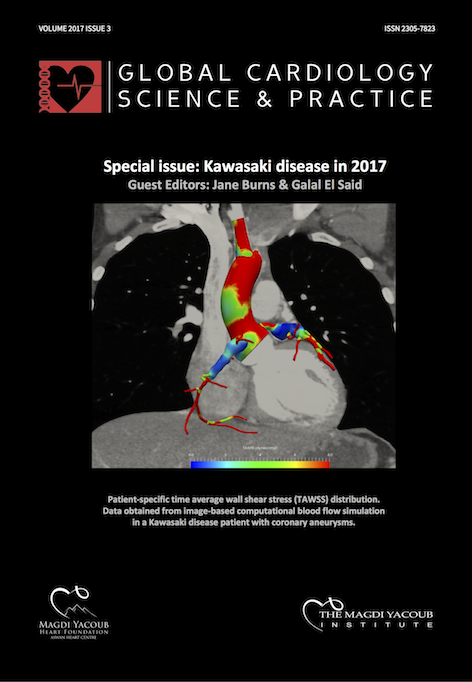Remote sensing observation of annual dust cycles and possible causality of Kawasaki disease outbreaks in Japan
DOI:
https://doi.org/10.21542/gcsp.2017.22Abstract
Kawasaki disease (KD) is a rare vascular disease that, if left untreated, can result in irreparable cardiac damage in children. While the symptoms of KD are well-known, as are best practices for treatment, the etiology of the disease and the factors contributing to KD outbreaks remain puzzling to both medical practitioners and scientists alike. Recently, a fungus known as Candida, originating in the farmlands of China, has been blamed for outbreaks in China and Japan, with the hypothesis that it can be transported over long ranges via different wind mechanisms. This paper provides evidence to understand the transport mechanisms of dust at different geographic locations and the cause of the annual spike of KD in Japan.
Candida is carried along with many other dusts, particles or aerosols, of various sizes in major seasonal wind currents. The evidence is based upon particle categorization using the Moderate Resolution Imaging Spectrometer (MODIS) Aerosol Optical Depth (AOD), Fine Mode Fraction (FMF) and Ångström Exponent (AE), the Cloud-Aerosol Lidar and Infrared Pathfinder Satellite Observation (CALIPSO) attenuated backscatter and aerosol subtype, and the Aerosol Robotic Network’s (AERONET) derived volume concentration.
We found that seasonality associated with aerosol size distribution at different geographic locations plays a role in identifying dominant abundance at each location. Knowing the typical size of the Candida fungus, and analyzing aerosol characteristics using AERONET data reveals possible particle transport association with KD events at different locations. Thus, understanding transport mechanisms and accurate identification of aerosol sources is important in order to understand possible triggers to outbreaks of KD. This work provides future opportunities to leverage machine learning, including state-of-the-art deep architectures, to build predictive models of KD outbreaks, with the ultimate goal of early forecasting and intervention within a nascent global health early-warning system.
Downloads
Published
Issue
Section
License
This is an open access article distributed under the terms of the Creative Commons Attribution license CC BY 4.0, which permits unrestricted use, distribution and reproduction in any medium, provided the original work is properly cited.


